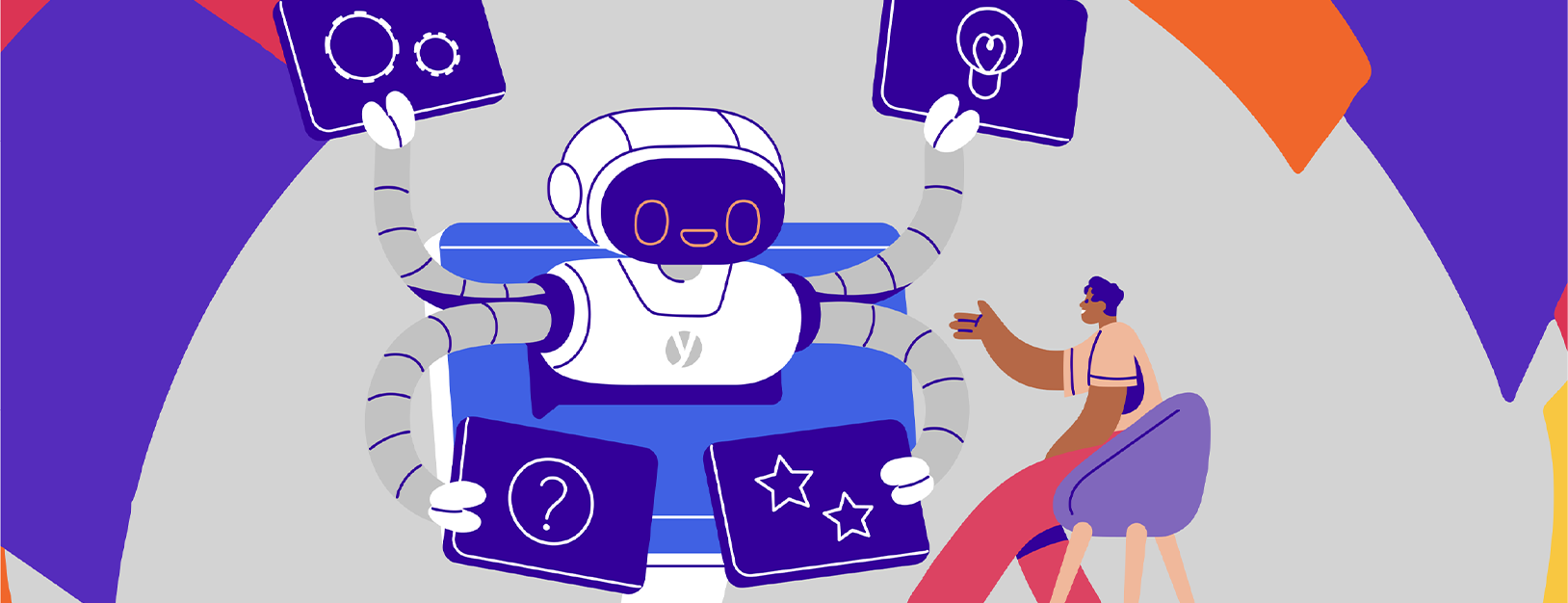
Length
2 min read
For the past 20 years, I’ve been fortunate to see the incredible evolution of UX and product design. We’ve gone from pixel-perfect mock-ups to user-centred research, from waterfall methodologies to agile design sprints. Now, on the horizon, stands another exciting shift – the emergence of generative AI. But is it a revolution, or an evolution?
A growing number of articles like Andreessen Horowitz – How Generative AI Is Remaking UI/UX Design herald a future where AI-powered Large Language Models (LLMs) handle the heavy lifting of design ideation and creation. They envision designers as merely curators, feeding prompts into a machine. While this rapidly evolving technological landscape holds immense potential, it’s crucial we approach it with a measured perspective. And here’s why.
AI as a powerful tool, not a replacement.
Let’s be clear: generative AI is a powerful tool. The ability to generate multiple design iterations based on prompts, translate designs to code, and personalise user experiences holds immense potential. These capabilities can free up designers from repetitive tasks, allowing them to focus on higher-level strategic thinking.
Skills like understanding user needs and behaviours, and crafting the information architecture are the cornerstones of great user experiences. AI can’t replace empathy, intuition, and the ability to translate complex problems into elegant accessible solutions.
Generative AI gives designers new ways to amplify their skills. But there are also new skills designers will need to develop to get the best outcomes from AI.
The Generative Experience Designer: a new skillset.
So, what does it mean to be a generative experience designer? Here’s the exciting part: it’s not about becoming an AI expert. The core design skills – user research, information architecture, interaction design, and visual communication – remain paramount. However, there several new skillsets that will be crucial:
- Understanding AI capabilities and limitations: Designers need to understand what AI can and can’t do. Can it truly grasp user psychology? Does it understand cultural nuances? A critical eye is essential to ensure AI-generated solutions align with design goals and user needs.
- Prompt engineering: Crafting effective prompts for AI tools is a new design skill. Vague prompts will lead to irrelevant or unusable outputs. Designers need to learn how to clearly articulate their vision and desired outcomes.
- Data fluency: AI thrives on data. Designers will need to be comfortable working with user data, understanding its limitations and potential biases, to ensure AI personalisation is truly user centric.
- Iterative refinement: AI-generated designs will rarely be perfect on the first (or even second) try. Designers need to excel at iterating and refining these outputs, ensuring the final product is polished, intuitive, and aligns with user needs.
Beyond skills, a new design mindset will be needed:
- Focus on the “why” not just the “what”: With AI generating multiple UI options, designers need to shift their focus from pixel-perfect mock-ups to the underlying design goals and user needs driving those choices and outputs.
- Establish a strong ethical foundation: Understanding the ethical implications of AI and implementing responsible design practices, will ensure that AI-powered products are not only innovative and efficient but also fair, transparent, and a benefit to society.
- Focus on user research and storytelling: As AI handles repetitive tasks, designers can focus on the human side of design. Strong user research skills and the ability to craft compelling narratives will become even more critical.
- Collaboration: Generative AI thrives on large datasets. Designers will need to collaborate with data scientists, engineers, and content creators to use AI effectively.
- Embrace experimentation: Generative AI allows for rapid experimentation with different design ideas. Embrace this new reality and use it to discover unexpected and innovative solutions. And then test them with real users.
A bright future for design
The rise of generative AI is exciting. However, let’s not get carried away by the hype. The future of design is not about AI replacing designers, but about a powerful collaboration.
This new era will demand a shift in focus: from pixel-perfect mock-ups to crafting exceptional user experiences. It will require collaboration, data fluency, and a deep understanding of both human behaviour and AI capabilities.
So, to my fellow designers, embrace the future. Learn about and experiment with AI, hone your user research skills, and become a master storyteller. The age of the Generative Experience Designer is upon us, and it’s going to be an exciting ride.
